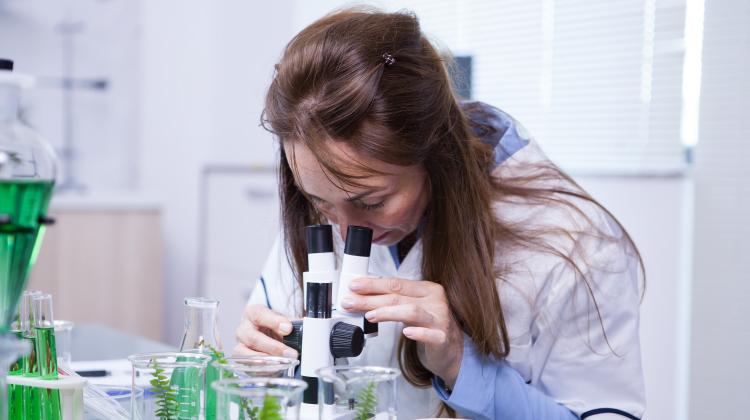Global warming caused by excessive CO2 emissions, climate change, and the overexploitation of natural resources have led to a point where the future of our planet is in question. It is very possible that if we do not introduce significant environmental protection measures now, life on Earth will look completely different in a few decades. Using the knowledge of scientists and the specialised equipment at TUL, we can have a real impact on improving the state of the natural environment. A good example of such activities is the research conducted under the TEX-WATER-REC project. Their aim is to develop a modern technology for recycling water in the textile industry.
One pair of jeans equals about 8,000 tonnes of water used
The focus of this project is water, which is a key resource in industrial production, but also an essential good for life. As consumers, are we aware of the huge quantities of water consumed in the production of textiles? When buying a new pair of jeans, do we think about the fact that around 8 000 litres of water were used to produce them? For most people, these questions remain unanswered, yet interest in technologies that reduce water consumption is growing exponentially among textile manufacturers. Consumers, too, are increasingly curious about whether the products they buy are environmentally friendly.
Recycling is a global trend in textile production
The trend to introduce water-saving technologies is widespread in the global textile manufacturing market. International players such as jeans manufacturers Levi Strauss, IKEA and H&M are reducing their water consumption. In contrast, reusing the same water, i.e. recycling it, is the ultimate goal and is highly desirable in industrial production processes.
Why is textile wastewater a scientific challenge?
The demand for water recycling technologies for the textile industry is very high. At the same time, it must be remembered that the development of such technologies requires specialised knowledge and is a real scientific problem. Textile production is inextricably linked to the need for intensive chemical treatment processes. For this reason, contamination of textile wastewater with detergents, dyes and auxiliaries (salts, acids, bases) is inevitable. This results in high alkalinity, salinity and extremely intense colour of this wastewater, which is linked to its very low biodegradability. Consequently, sending such wastewater to collective municipal treatment systems based mainly on biological processes (activated sludge) may lead to their malfunctioning and emission of pollutants outside the system into the environment.
New technologies at the service of the environment
The development of textile wastewater treatment techniques requires an individual approach and the application of new, out-of-the-box solutions. This was the idea behind the TEX-WATER-REC project. In this case, cold plasma is the tool to protect the environment. Treating heavily contaminated wastewater containing dyes so that they can be reused is a major technical challenge. One of the most promising treatment methods with implementation potential is ozonation in the presence of a catalyst. This is where cold plasma comes to the rescue. The development of new, efficient catalysts is at the heart of the TEX-WATER-REC project. Together with colleagues from the Department of Molecular Engineering (WIPOŚ TUL), using a novel cold plasma technique, we produce thin film catalysts applied on a solid substrate with an extended geometry. In this way, modern, active nanostructured materials are created, covering the surface of a metal lattice. These materials act as heterogeneous catalysts in the ozonation process, increasing the efficiency of pollutant removal from wastewater. The developed technical solution (reactor with plasma catalyst) will be tested on an enlarged scale under industrial conditions.
From laboratory to industry
The TEX-WATER-REC project is funded by Norwegian funds under the Small Grant Scheme. Initial laboratory results are promising. In two years' time, I expect the positive outcome of the project to be a fully developed, ready-to-implement water recycling technology. I have been working in industry for 13 years and I combine working in the Department of Molecular Engineering of the Faculty of Process and Environmental Engineering with managing the R&D Department in the textile dyeing plant of Biliński sp. j. in Konstantynow Lodzki. Many technologies developed with my participation have been successfully implemented and are used in industrial practice. Konstantynow dyeing plant as one of the few in the world can be proud of a fully functional water recycling system. In this company, about 50% of water is reused in production processes, which is more than 1,000 m3 of this resource every day.




